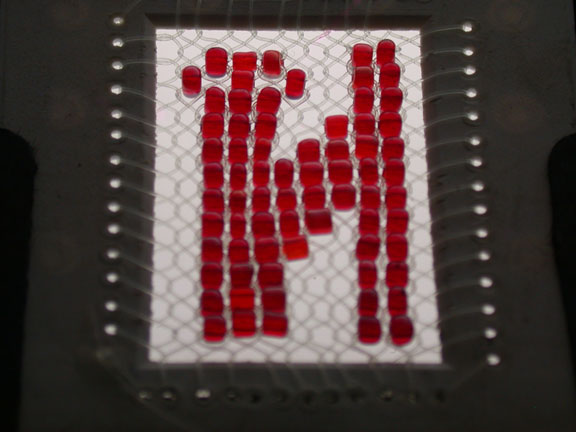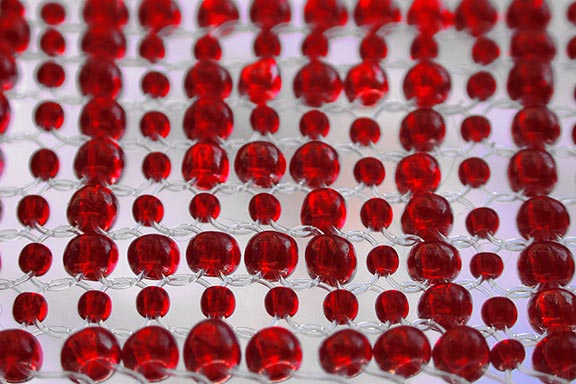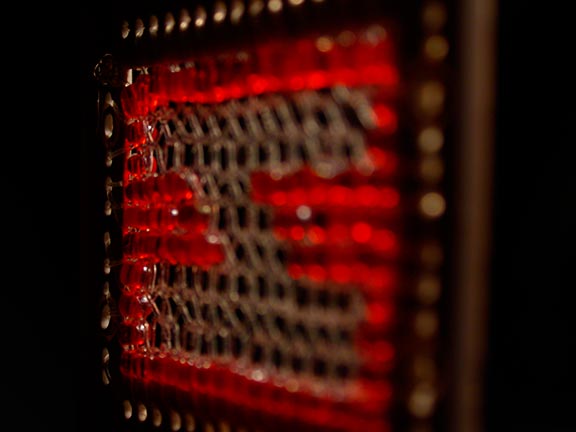Mallki.
2004. Microtextiles, light box, 35mm slides, slide projectors, dissolve unit. Bronx Museum of the Arts, AIM-24 exhibit. Textile art from Peru depicts all sorts of realistic beings
and an array of geometric abstractions. These textiles usually exhibit a
repetitive pattern arranged within a checkerboard layout. There are slight
variations in the repetition, small shifts in the grid
create different versions of the pattern. Pattern replication
goes through rotation, negativization, color shift and multiple
partitions from one pattern to the next. These diversification process suggests new meanings, becoming itself a sort
of language.
The language of the changing pattern describes the forces that
transform a shape into a new one. Mallki is a
kechua word that has two meanings: sprout and mummy. In ancient Peru mummies
were placed in a fetal position and kept in womb-shaped chambers.




|
 |
|
|
|
 |
|
|

